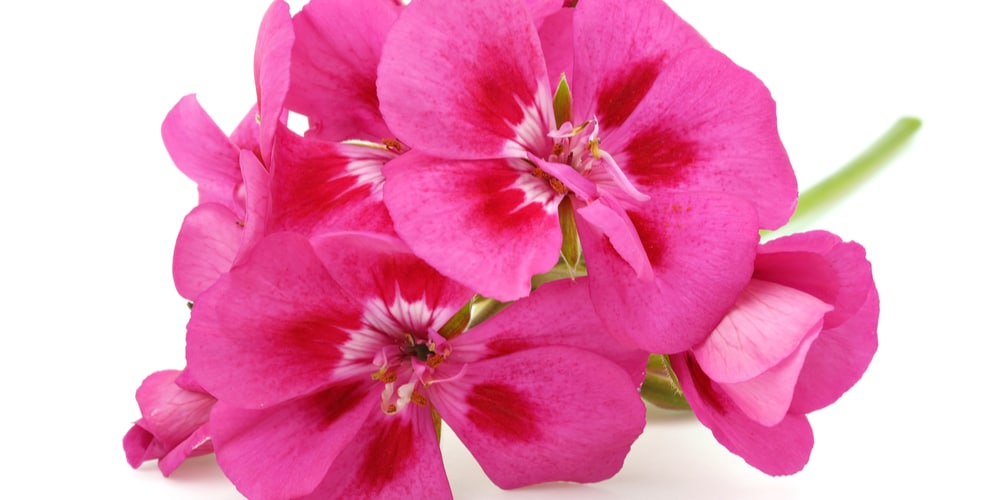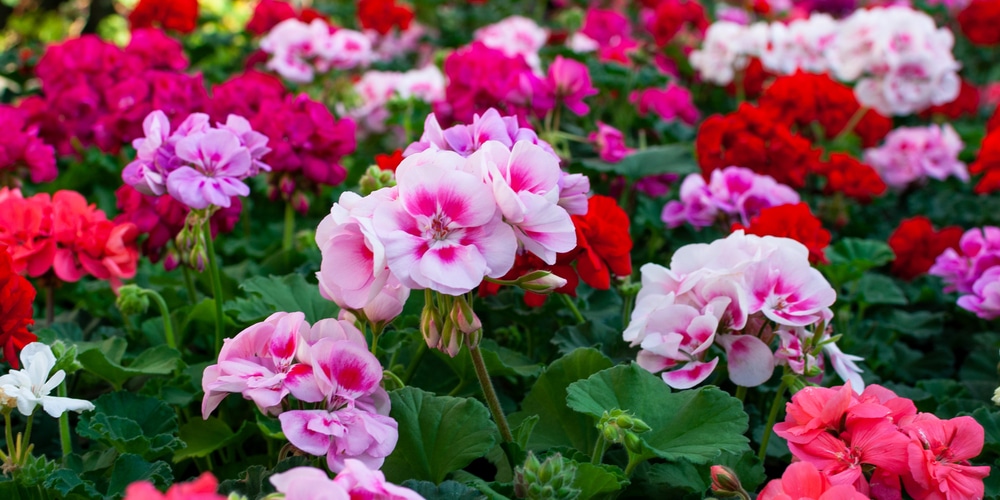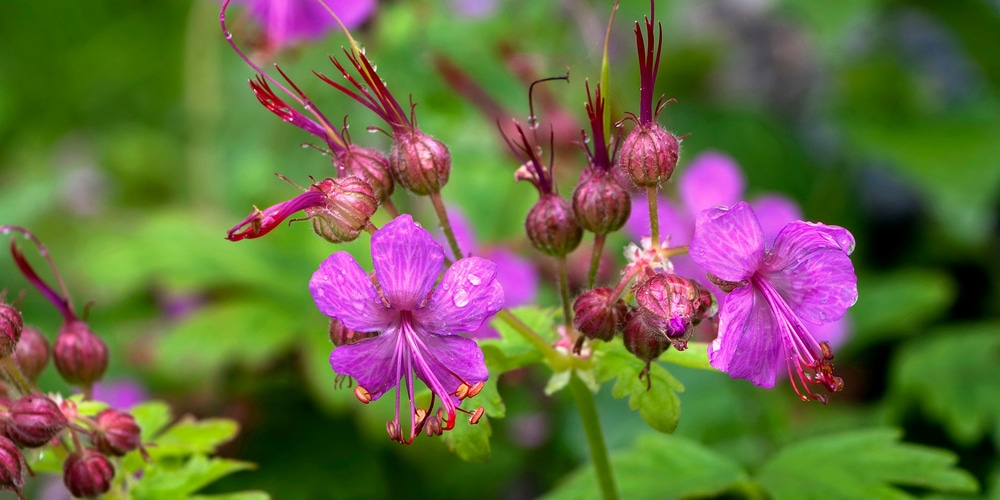Geraniums are a garden staple for gardeners wanting to add some vivid color to their gardens. These plants are versatile and perform well indoors, in hanging baskets, or outdoors in containers. Their blooms are stunning and bright-colored, perfect for making your yard more attractive. Plus, geraniums will enrich your garden with an appealing smell that will make it even more pleasant for you and your family to spend time in your yard. Can geraniums grow in the shade? Let’s find out!
A Bit About Geraniums
Native to South Africa, geraniums love the heat and don’t mind the full sun. Depending on where you live, you can grow them as annuals or perennials, but keep in mind that they won’t survive frosts. As long as you give these plants what they need, you won’t have issues growing geraniums. Indeed, these plants are easy to grow and prolific flower producers, perfect for those who don’t have much time to spend in their gardens but want a colorful and healthy yard. But what if you can’t offer them full sun? Can geraniums grow in the shade?
Keep reading to find answers to these questions. Here you’ll learn how to make the most out of the shady parts of your garden and grow healthy geraniums. Luckily, if you can’t offer full shade to your plants, that doesn’t mean you can’t have a lush and healthy garden. There are plenty of flowers that grow well even in light-deprived conditions. But is geranium a good choice for these conditions?
Can Geraniums Grow in the Shade?
Let’s get straight to the core of the question. While geraniums prefer full sun, which will ensure they keep producing blooms over spring and summer, they can also grow in the shade. Beware that conditions of deprived sunlight might result in fewer blooms and halted growth. So, even if your geraniums might survive in the shade, they will probably not thrive.
As with all plants, geraniums need sunlight for photosynthesis, which allows them to grow and reproduce (thus producing flowers). Without it, your plants will have to slow down their growth. For best results, place your geranium in partial shade, where they can get at least four hours of sunlight per day. For even greater bloom production, try to find a spot that receives full sun.
Only a couple of hours of sun will be enough if you live in a warm region, where the rays can hit your plants harshly and ruin their leaves or blooms. But if you live in a colder place, providing your geraniums with at least a couple of hours of sun will give you the best results.
Keep in mind that excessive shade might result in a lack of blooms from your plant, which doesn’t mean your geraniums will die, only that they won’t have enough energy to produce flowers. Relocate them in a place with slightly more sun if you notice your geraniums are not blooming.
But if you are looking for a plant that will grow without issues without much sunlight, you can try with hardy geraniums. These perennials are different from the plants we described and thrive in partial to full shade. They grow well in USDA zones from four to eight and won’t mind even dry conditions.
Jump to the next section to learn how to care for geraniums and boost their flower production!
Geraniums Care
As we mentioned before, geraniums are not challenging plants. However, you will have to meet their basic requirements to have them thrive in your garden. Besides choosing a suitable location for them, plant them in loose, well-draining, rich in nutrients soil. Geraniums like moisture but won’t survive in wet environments, which will cause your plants to rot. Don’t forget to pick a container with drainage holes to improve water flow and prevent that from happening.
The best way to water your geraniums is to wait until the soil feels dry: doing so will help you avoid overwatering. Depending on your local weather, you might have to increase or decrease the frequency you provide moisture to your plants. If you live in a hot region, you might have to water your geraniums more often. Consider adding mulch around your plants to regulate the soil temperature and improve water retention.
Can Geraniums Grow in the Shade?: Final thoughts
Don’t forget to deadhead old flowers regularly to maximize flower production: this will allow new blooms to come out. Also, you might get better results by fertilizing your plants every two weeks or so; use a slow-release liquid product to increase effectiveness. Remember not to fertilize in the winter, when geraniums are dormant.


